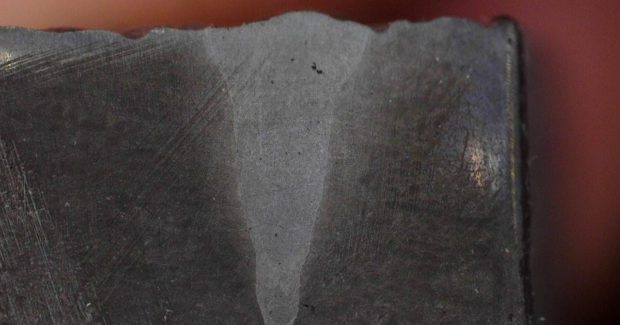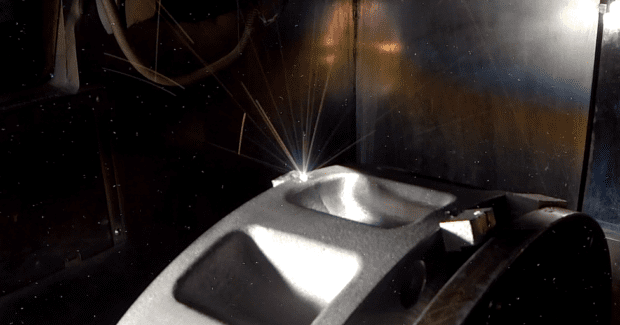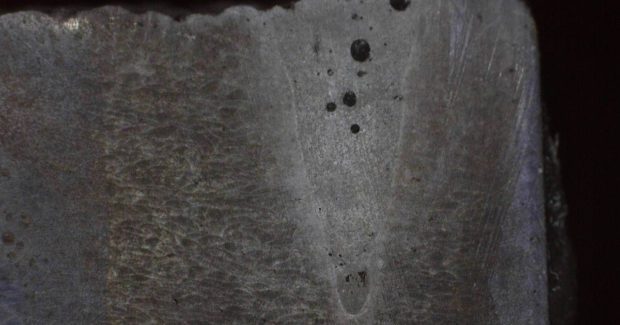How To Weld 3D Printed Parts
The 3D metal printing process is prone to capture microscopic inclusions and voids in the material. When these parts are welded, these micro voids coagulate into large bubbles of porosity that weaken the weld due to stress concentration in the area of the porosity. John DeLalio of EB Industries explains how electron beam welding can be used to address this issue.
Posted: August 26, 2016
Additive manufacturing (also known as 3D metal printing) is revolutionizing part design, development, and manufacture. However, there has been little discussion about how to join 3D printed parts via welding. The challenge is that by its nature, the 3D metal printing process is prone to capturing microscopic inclusions and voids in the material. When these parts are welded, these micro voids coagulate into large bubbles, a tendency known as porosity. Porosity is a problem in that it weakens the weld due to stress concentration in the area of the porosity. Additionally, high porosity can lead to microscopic cracks and leak paths.
We have been providing precision welding services that utilize electron beam and laser welding technologies for the past 50 years. These two welding methods have been instrumental in the design and fabrication of many cutting edge parts that have been traditionally machined for industries such as aerospace, automotive, energy, and medical devices. But with the rise of additive manufacturing in these sectors, we now see a resurgence in the utility and practicality of electron beam and laser welding for joining highly engineered 3D printed parts.
For example, we recently worked with ThermoLift, a Long Island company that is developing a cold-climate, natural gas air-conditioner and heat pump technology that combines heating, air-conditioning, and water heating into a single appliance that can provide a 30 percent to 50 percent reduction in building HVAC costs as well as associated reductions in greenhouse gas emissions. ThermoLift is using 3D printing to construct its Gen 2.0 prototype, which includes the device’s heat exchanger, a four-part aluminum assembly that is the heart of the system. This critical heat exchanger relies on transferring heat using water on the inside and high pressure helium gas on the outside. A traditionally designed tube heat exchanger was not an option due to the unique thermal properties the device utilizes to extract energy. ThermoLift’s only option was to design the heat exchanger from the ground up, utilizing 3D aluminum printing.
Early prototypes of the printed heat exchanger had issues with removing excess aluminum powder from interior channels that was not melted during the printing process. This problem was solved in the second generation design by printing four separate heat exchanger sections that would then be welded together in the final piece. This is where the welding challenge arose: the welds had to be precisely located and fairly deep in penetration in order to hold the parts together given the operating pressure of the device. Additionally, the welds had to be hermetically tight, able to pass a Helium mass spectrometer leak test down to 1x 10-8 cc/He sec.
In order to achieve the locational accuracy and deep penetration, electron beam welding was the preferred welding method. EB welding is not a hand welding operation, therefore the location of the weld could be very tightly controlled using CNC controls. Additionally, EB welding can achieve deeper weld penetrations than any other welding methods, able to reach depths in aluminum of up to ¾ in. However, 3D metal printed material is prone to porosity when welded. The heat of the weld melts material, causing microscopic voids and inclusions to combine and form significant porosity. But if the weld pool is melted a second time, the porosity can bubble out or vaporize from the weld area.
Fortunately, electron beam welding technology can be very tightly controlled from both a location and a depth perspective. The solution for the ThermoLift device involved welding the joint twice. By hitting the weld twice, the weld nugget was precisely re-melted and the porosity was vaporized out – a rather simple solution that yielded excellent results. The joint was of the proper depth, had minimal porosity, and was hermetically sealed. More importantly, ThermoLift had their working heat exchanger.
With 3D metal printing, designers have great flexibility when it comes to designing parts for form and function. But often, these parts “as designed” cannot be fully fabricated without applying more established manufacturing methods. For ThermoLift, having access to expert knowledge, experience and technology in a more traditional area of manufacturing – precision welding in particular – was critical to the success of their heat exchanger. “EB Industries was a key partner in the successful development of the Gen 2.0 Heat Exchanger,” said Paul Schwartz, the chief executive officer of ThermoLift. “Their expertise with electron beam welding allowed us to overcome the limitations of 3D metal printing that could not be achieved by any other joining method. They also supported my team with years of practical knowledge in the fabrication of metal parts, and an absolute commitment to do whatever it takes to help us achieve our goals.”
Cutting edge technology is a thrilling thing, but there is a tendency to discount the value of established, proven technology as a critical component of innovation. Electron beam welding is one such technology. Still unmatched for precision, controllability, repeatability, and weld purity, this welding process remains mission critical in many high tech applications.







